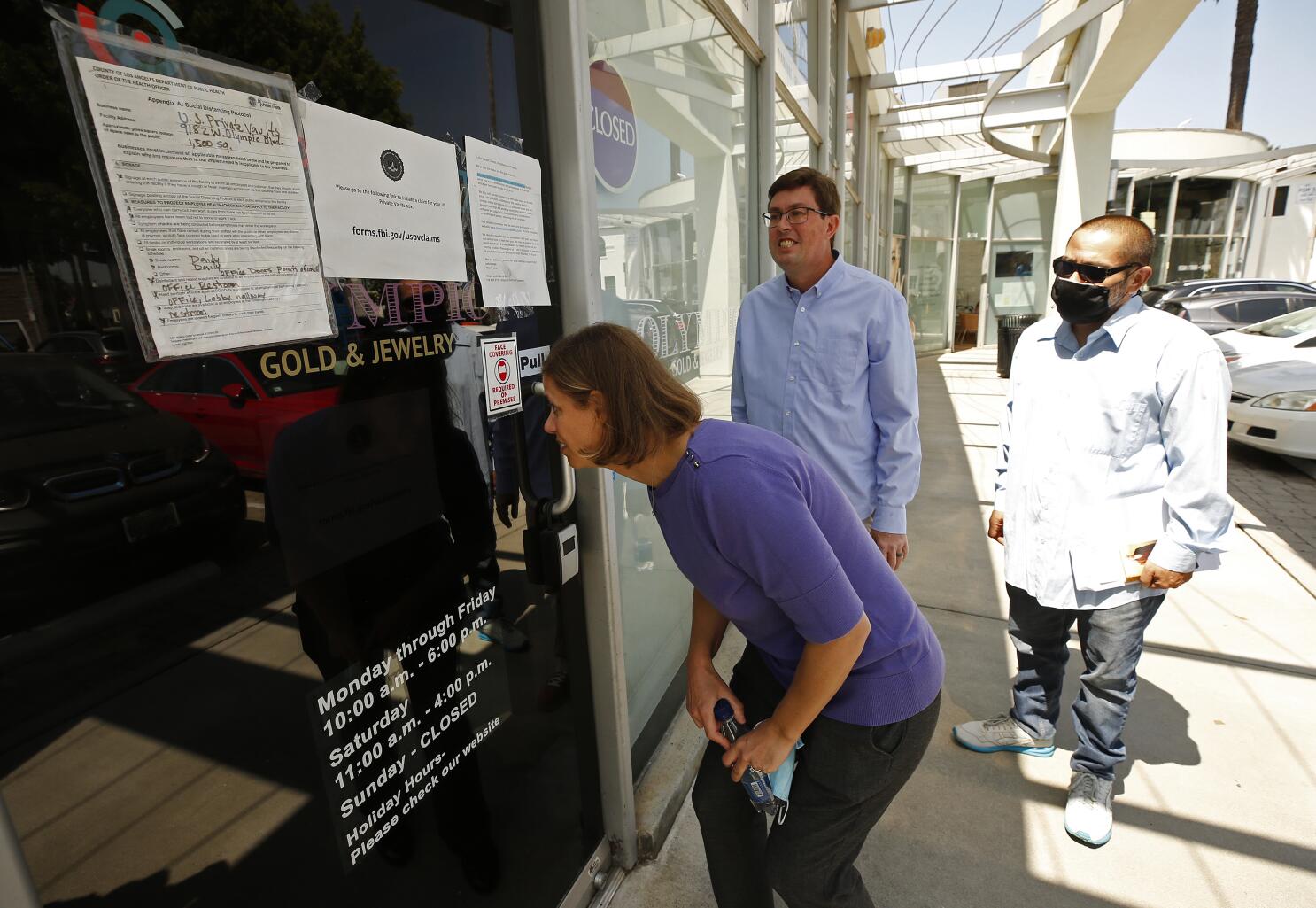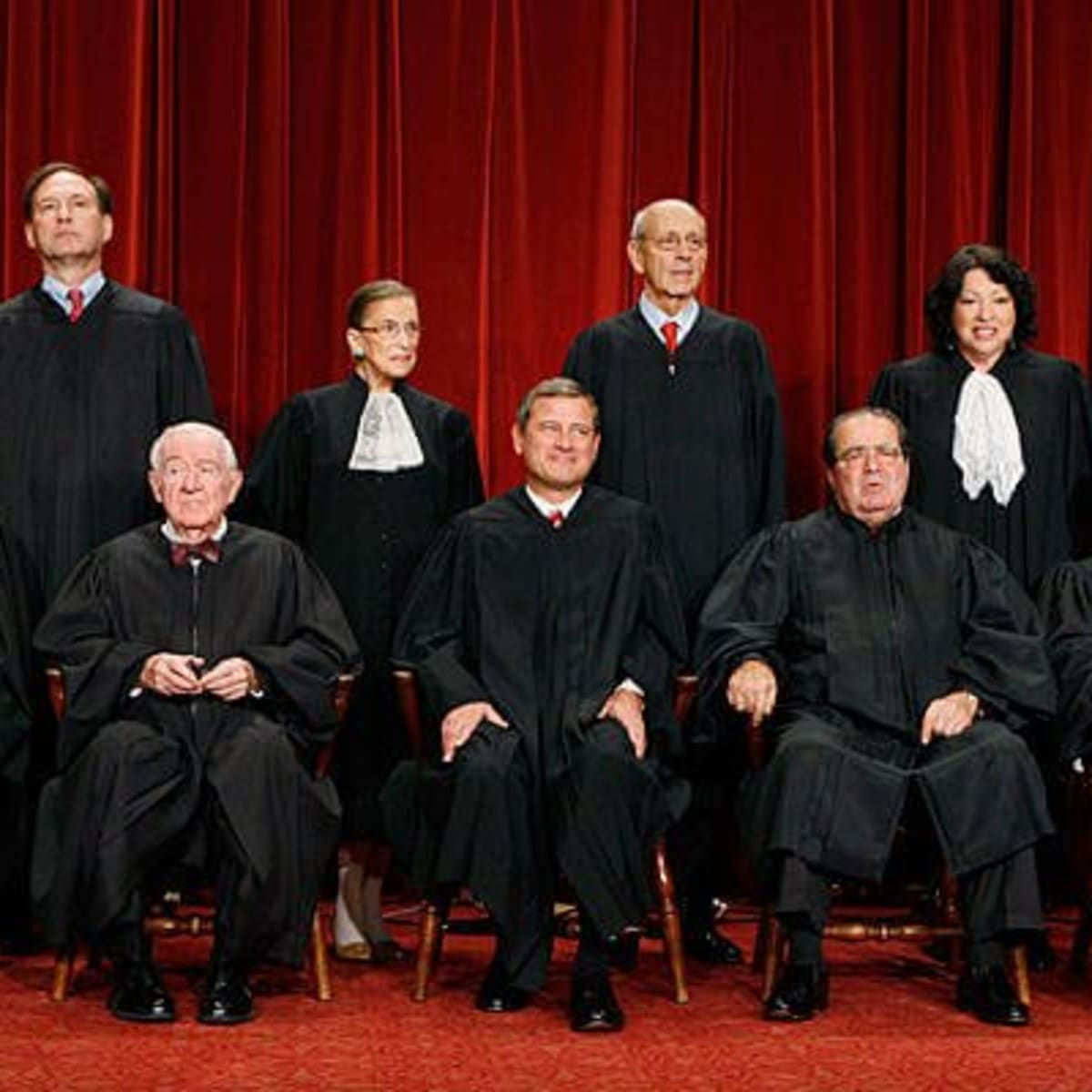Civil Forfeiture: Can the Government Really Seize and Take Ownership of My Company’s Assets?
In 2017, the Department of Justice (“DOJ”) reported more than $8.2 billion held in its forfeited-assets fund, [1] which is a $600 million increase from the $7.6 billion in the fund in 2016. [2] The cases brought by the government in 2017 show the government’s intent to continue aggressive use of civil asset forfeiture. For example, in June 2017, the DOJ filed an in rem civil complaint seeking the seizure and forfeiture of approximately $540 million in assets that allegedly were fraudulently diverted from 1Malaysia Development Berhad (“1MDB”) — a development company owned by the Malaysian government — and purportedly laundered throughout the United States. [3] In the 1MDB case alone, in rem arrest warrants, asset seizures, and settlements (worth millions) already have been obtained by the DOJ, affecting both companies and individuals tied to these assets — with many more to come. [4]
Civil asset forfeiture can raise a number of issues for a company, such as potential exposure for aiding and abetting a crime (including money laundering or obstruction of justice), possible conflicts of interest (particularly when an internal investigation into an investor or executive needs to occur), waiver of the attorney-client privilege (especially when communicating with suspected individuals or the government), or spoliation of evidence (notably more likely where action is not promptly taken by independent counsel to preserve, collect, and analyze relevant data).
A company does not have to be involved in money laundering for civil asset forfeiture to apply; any asset tainted by criminal activity may be subject to forfeiture. A company’s assets may become tainted in a number of ways, including receipt of tainted money from a customer, receipt of a physical item from a vendor who purchased it with tainted funds, or even misconduct within the company itself. Additionally, a company does not need to be directly involved in the underlying “tainting” crime to be subject to legal ramifications. For example, innocent acceptance of a tainted investment in a company that is then used to buy real estate and pay executive bonuses may drag that company, its investors, its executives, and the government to potential in rem forfeiture proceedings to determine the true owner of the land and money at issue. Another common example exists where a company is merely holding an asset on behalf of another entity, such as a bank holding tainted funds for a depositor or a museum that learns a collection it is exhibiting on loan contains stolen property.
This article discusses the civil asset forfeiture laws and the corresponding defenses that may help a company assess its potential exposure to forfeiture issues.
Civil Asset Forfeiture and Adoptive Forfeiture
Civil asset forfeiture is one of the government’s most powerful law-enforcement tools. The government may use the forfeiture process to seize assets used in or derived from the commission of crime without convicting their owner(s) of a crime. [5] At its core, civil asset forfeiture is a tool to curtail criminal activity by seizing the assets that enabled or came from those criminal actors. It authorizes officials to seize tainted assets, such as real estate, cash, monetary instruments, and the like. [6]
Civil asset forfeiture is not limited to the federal government; every state has some form of civil asset forfeiture — and now may use federal procedures, too. In July 2017, two years after the Obama administration halted its use, [7] the Trump administration reauthorized the use of “adoptive forfeiture” with a more aggressive policy. [8] Adoptive forfeiture authorizes state and local officials to seek a civil asset forfeiture under federal civil asset forfeiture law, regardless of their own state’s limitations on civil asset forfeiture.
Federal Civil Asset Forfeiture Law
In a federal criminal trial, the government has the burden of proving, beyond a reasonable doubt, that the accused committed a federal crime. [9] Yet, in a civil asset forfeiture proceeding, the government only has the burden to prove that it is more likely than not that an individual’s assets were used to facilitate a federal crime or were the proceeds of a federal crime — a substantially easier standard of proof to meet. [10] It also does not matter if the company was involved in the commission of the crime; rather, forfeiture may apply to a company that only learns (or deliberately avoids learning) about the tainted source of its assets after the fact. [11]
Adoptive Forfeiture
Normally, state and local officials engaged in civil asset forfeitures would have to abide by the procedures and a standard of proof set by their respective jurisdictions. If a state law required a criminal conviction before a civil asset forfeiture could proceed, a state or local official could not execute the forfeiture absent a conviction. The reauthorized adoptive forfeiture law makes it possible for state and local officials to perform that very same civil asset forfeiture under the federal standard of preponderance of the evidence, regardless of whether a conviction had been obtained. For instance, in the states of California, Nebraska, and New York, it is far easier to obtain a forfeiture under federal law than under state law because of the state requirement that a criminal conviction be obtained before a final forfeiture order may occur. Because adoptive forfeiture makes it easier for state and local officials in these states to seize tainted assets, companies located in these states likely will see an increase in civil asset forfeiture proceedings. Adoptive forfeiture, however, is not without guidelines.
The U.S. Attorney General set a number of safeguards for individuals or organizations potentially subject to an adoptive forfeiture. [12] First, all adoptive forfeitures must be supported by probable cause to seize the assets. Next, all law-enforcement agencies — whether federal, state, or local — must receive specialized training in the area of civil asset forfeiture. Lastly, recognizing the need for additional safeguards for smaller forfeitures that may have a dramatic impact on an indigent owner, unless previously authorized by the U.S. Attorney’s Office, all adoptive forfeitures equal to or less than $10,000 occur:
(1) pursuant to a state warrant, (2) incident to arrest for an offense relevant to the forfeiture, (3) at the same time as a seizure of contraband relevant to the forfeiture, or (4) where the owner or person from whom the property is seized makes admissions regarding the criminally derived nature of the property. [13]
The Attorney General announced no such additional safeguards for adoptive forfeitures surpassing the $10,000 threshold, indicating that larger or wealthier entities may be subject to a forfeiture process with few procedural protections. [14]
Since 2015, when adoptive forfeiture was last authorized, many states have reformed their laws, shifted the burden to the state, and raised the standard of proof that state and local officials must meet to use the state forfeiture process. In these states, state and local officials may now seek to bypass the high standards of proof in their state laws and increase the use of adoptive forfeiture.
State Civil Asset Forfeiture Law
States Most Protective of Ownership Interests Require a Conviction and Limit the Use of Adoptive Forfeiture
States vary with regard to their civil asset forfeiture standards. States that are most protective of ownership interests often require that government officials seeking civil asset forfeiture meet a higher standard of proof. In most cases, state and local officials in those states, such as California, [15] Nebraska, [16] New Mexico, [17] and New York, [18] have to obtain a conviction before performing their civil asset forfeiture.
In addition, some of the most protective states also placed limitations on how state and local officials may make use of adoptive forfeitures, either restricting the practice altogether — e.g., New Mexico [19] — or establishing monetary thresholds under which an adoptive forfeiture may not occur — e.g., $40,000 in California [20] and $25,000 in Nebraska. [21] Notably, both the federal and state focus on avoiding lower-dollar-value forfeitures suggests that they necessarily will prioritize forfeitures involving expensive property, high-net-worth individuals, and companies linked to tainted assets.
States Least Protective of Ownership Interests Neither Require a Conviction Nor Place Limitations on the Use of Adoptive Forfeiture
States least protective of ownership interests, such as Delaware, [22] Massachusetts, [23] and Washington, [24] typically do not require that officials obtain a conviction before executing their civil asset forfeiture and have an equal or lower standard of proof as that of the federal government. Washington only requires that officials prove by a preponderance of the evidence that the property was linked to the commission of a crime or was the product of a crime. Furthermore, Delaware and Massachusetts only require that officials meet the lower standard of probable cause to seize assets, which automatically evolves into a valid forfeiture if intervention does not occur after a given time period once notice of the seizure is published. Moreover, none of these states placed any limitations on the use of adoptive forfeiture because state prosecutors would choose to proceed under the less-protective state laws anyway. Companies in these states face an increased exposure of seizure, given these lower civil asset forfeiture standards.
Notably, these issues are continually evolving and remain a focus of legislatures across the nation. In 2017, Pennsylvania migrated from a less protective state (e.g., a preponderance standard) to a more protective state (e.g., a clear and convincing standard) by implementing numerous updates to its forfeiture laws. [25] To avoid circumvention of the higher state standards, Pennsylvania prohibited the use of adoptive forfeiture. [26]
Defenses to Civil Asset Forfeiture
The defense to a civil asset forfeiture proceeding is not always as straightforward as simply relinquishing the tainted asset, especially if that asset already has been repurposed or dispersed by a company. Moreover, a company must balance the demands of the authorities with its duty to its shareholders, particularly when an asset has dramatically appreciated or would have an impact on innocent shareholders if lost.
The inability or refusal to forfeit an asset may result in a contested forfeiture proceeding, which may raise many possible pitfalls for a company. For example, before receiving official notice of a forfeiture proceeding after a seizure, the authorities often subpoena — or even execute a search warrant targeting — a company, which creates an opportunity for cooperation and negotiation. Sometimes, a company is the first to learn of potential tainted assets through an internal investigation that may be privileged — and that may lead to decisions on whether and how to disclose the findings to authorities. If a voluntary disclosure will be made (or even if seized assets may have been involved in both federal and state crimes), a decision on which authorities to inform may be necessary. Furthermore, if authorities already have started an investigation, gathering documentary evidence and discussing the issue with any potential investigative target could possibly expose the company to obstruction of justice or similar issues if handled incorrectly, though these efforts may be critical to a proper internal-investigative report or forfeiture defense.
Civil Asset Forfeiture and the Eighth Amendment
While civil asset forfeiture constitutes a broad policing power, courts have recognized an Eighth Amendment safeguard against excessive fines in the form of a proportionality protection. Following the Supreme Court’s decision to recognize a proportionality protection in civil asset forfeitures in United States v. Bajakajian, [27] Congress passed the Civil Asset Forfeiture Reform Act of 2000, largely codifying the proportionality protection into the statute. [28]
The effectiveness of the defense varies wildly depending on the circumstances. According to the Fourth Circuit, “in most cases, courts ultimately will find a forfeiture of proceeds not grossly disproportional to the offense.” [29] The support for this reasoning is that the statute itself is already limiting civil asset forfeitures to assets that are somehow connected to the commission of a criminal act. A proportionality argument will most likely come into play with failure-to-report crimes like in Bajakajian [30] or in situations where culpability has to be apportioned among multiple defendants. In those circumstances, the basic notion that an asset has been linked to a crime might not be enough to warrant a full forfeiture. In circumstances where the owner of a forfeitable asset might be innocent of any crime, the statute provides an innocent-owner defense.
Civil Asset Forfeiture and the Innocent-Owner Defense
The Federal Innocent-Owner’s Defense
Federal civil asset forfeiture provides that an “innocent owner” of an otherwise-forfeitable asset shall not be subject to any federal civil forfeiture statute. [31] The statute defines an innocent owner as an owner who either “did not know of the conduct giving rise to the forfeiture,” or “upon learning of the conduct giving rise to the forfeiture, did all that reasonably could be expected under the circumstances to terminate such use of the property.” [32] Under the statute, an “innocent owner” has the burden to prove the applicability of the defense by a preponderance of the evidence.
Courts likely will not recognize the defense where an issue of willful blindness is present — that is, the purported innocent owner chose to remain ignorant as to the illicit activity occurring in connection with his property. [33] For example, in United States v. $175,121.75, [34] the purported innocent owner received several bank transfers amounting to $626,260 in his business bank account from a company with which he had never previously dealt. The transfer was part of the Drug Enforcement Agency’s operation into the discovery of a money-laundering and drug-trafficking ring. [35] The court reasoned that the purported innocent owner was not an innocent owner because, although he was never linked to the drug or money-laundering operation, the purported innocent owner never inquired as to the reason he received the funds. Accordingly, the court found that the purported innocent owner was — at the least — willfully blind as to the source of the funds and not entitled to the innocent-owner defense. [36]
On the other hand, where an issue of willful blindness is not present, courts seem to be more willing to grant an innocent-owner defense. In United States v. 246 Main St., [37] the court held that a businessman was entitled to the innocent-owner defense because he terminated a business relationship with his partner as soon as he learned that his partner had invested embezzled funds. [38] As part of the settlement agreements between the partners, the businessman became the sole owner of one of their shared properties, which he believed was untainted. [39] Based on those facts, the court found that the innocent businessman did not know and had no reasonable cause to suspect that the property was tainted by the embezzlement and subject to forfeiture. [40] Accordingly, the court upheld the innocent-owner defense and ownership of the property. [41]
The State Innocent-Owner Defense
In 1996, the United States Supreme Court held that property owners did not have a constitutional right to an innocent-owner defense in forfeiture cases. [42] Nevertheless, all states also have enacted their own innocent-owner defenses, which largely resemble the federal defense. The biggest distinction between federal and state innocent-owner defenses is the shift in the burden of proof between the “innocent owner” and the government. In some states, the innocent owner must affirmatively state the defense; [43] in other states, it is the government’s affirmative duty to show that the defense would not apply. [44] These laws continue to evolve. Further, the application of the law may depend on when a crime occurred or when a statute was amended.
Where a defendant may get a benefit from applying a newer law instead of an older law or where vagueness exists regarding which law should apply, the defendant typically is entitled to have doubts resolved in his or her favor under The Rule of Lenity. As recently as September 2016, California forfeiture law was clarified to provide that “the state or local governmental entity shall have the burden of establishing . . . that the owner of any interest in the seized property consented to the use of the property with knowledge that it would be or was used for a purpose for which forfeiture is permitted[.]” [45] This requirement may be grafted onto ongoing — or even new — cases that involve seizures or crimes from before 2016.
Conclusion
With some states making it more difficult for state and local officials to execute civil asset forfeitures under state law, there is a possibility of an increased use of adoptive forfeiture and, as a consequence, an increase in exposure for a company with tainted assets. Companies in jurisdictions such as New York, with higher standards of proof and no limitations on adoptive forfeiture, will likely be the most affected by the reauthorization of adoptive forfeiture. Companies in jurisdictions such as Delaware, Pennsylvania, and Washington, are likely to remain unaffected by this particular decision, though they still may be swept into the general trend of increasing forfeiture actions that focus on higher-value targets.
If a company has reason to believe that it may have a tainted asset subject to forfeiture, it should consider consulting with outside counsel, before any deeper internal inquiry or further communications with the bad actor, to determine, among other things:
the company’s potential criminal and civil exposure under applicable federal and state law, which includes an analysis of the path a tainted asset followed to the present point and perhaps an internal investigation if wrongdoing within the company is suspected;
the company’s ownership or other interest in the asset at issue;
whether there is a conflict of interest between the company and the potential bad actor and how that conflict of interest should be handled to avoid further liability and waiver of the company’s attorney-client privilege;
the potential benefits of taking affirmative steps in disclosing the issue to the authorities before they start an investigation; and
whether and how the company issues a litigation hold to preserve the relevant evidence.
[1] U.S. Dep’t of Justice, Audit of the Assets Forfeiture Fund and Seized Asset Deposit Fund Annual Financial Statements Fiscal Year 2017, https://oig.justice.gov/reports/2017/a1805.pdf (last visited Mar. 23, 2018).
[2] U.S. Dep’t of Justice, Audit of the Assets Forfeiture Fund and Seized Asset Deposit Fund Annual Financial Statements Fiscal Year 2016, https://oig.justice.gov/reports/2016/a1706.pdf (last visited Mar. 23, 2018).
[3] U.S. Dep’t of Justice, Complaint, https://www.justice.gov/opa/press-release/file/973671/download (filed on July 15, 2017).
[4] See, e.g., https://asiancorrespondent.com/2018/03/exclusive-us-files-explain-seizure-250mil-superyacht-1mdb-scandal/; http://fortune.com/2017/06/16/1mdb-leonardo-dicaprio-fund-picasso/; http://money.cnn.com/2018/03/07/media/wolf-wall-street-red-granite-1mdb-settlement/index.html.
[5] Unlike criminal asset forfeiture, civil asset forfeiture is an in rem proceeding: a proceeding against a thing, as opposed to an individual. “In rem proceedings often enable the government to seize the property without any predeprivation judicial process and to obtain forfeiture of the property even when the owner is personally innocent[.] Civil proceedings often lack certain procedural protections that accompany criminal proceedings, such as the right to a jury trial and a heightened standard of proof.” Leonard v. Texas, 137 S. Ct. 847, 847–48 (2017) (Thomas, J., concurring in the denial of certiorari).
[6] Parallel to civil asset forfeitures are criminal asset forfeitures, which are forfeitures that follow the conviction of an individual and are part of a criminal proceeding. See 18 U.S.C. § 982. Besides the higher standard of proof required in criminal proceedings, criminal asset forfeitures often allow government officials to use substitute-asset provisions, authorizing officials to seize and forfeit untainted assets if the tainted assets cannot be found. See 21 U.S.C. § 853(p) (authorizing seizure of any property as a substitute asset for missing or devalued property in drug crimes); but see 18 U.S.C. § 984 (authorizing a substitute-asset seizure in civil asset forfeitures in the context of money held in the same financial institution account within one year).
[7] U.S. Dep’t of Justice, Attorney General Prohibits Federal Agency Adoptions of Assets Seized by State and Local Law Enforcement Agencies Except Where Needed to Protect Public Safety, https://www.justice.gov/opa/pr/attorney-general-prohibits-federal-agency-adoptions-assets-seized-state-and-local-law (issued Jan. 16, 2015).
[8] U.S. Dep’t of Justice, Attorney General Sessions Issues Policy and Guidelines on Federal Adoptions of Assets Seized by State or Local Law Enforcement, https://www.justice.gov/opa/pr/attorney-general-sessions-issues-policy-and-guidelines-federal-adoptions-assets-seized-state (issued July 19, 2017).
[9] See, e.g., Miles v. United States, 103 U.S. 304, 312 (1880) (“The evidence upon which a jury is justified in returning a verdict of guilty must be sufficient to produce a conviction of guilt, to the exclusion of all reasonable doubt.”); In re Winship, 397 U.S. 358, 361 (1970) (“The requirement that guilt of a criminal charge be established by proof beyond a reasonable doubt dates at least from our early years as a Nation.”); Clark v. Arizona, 548 U.S. 735, 738 (2006) (“[A] defendant is innocent unless and until the government proves beyond a reasonable doubt each element of the offense charged[.]”).
[10] See, e.g., In re Winship, 397 U.S. 358, 367 (1970) (“Finally, we reject the Court of Appeals’ suggestion that there is, in any event, only a ‘tenuous difference’ between the reasonable-doubt and preponderance standards.”).
[11] See Van Oster v. Kansas, 272 U.S. 465, 467–68 (1926) (“The law thus builds a secondary defense against a forbidden use and precludes evasions by dispensing with the necessity of judicial inquiry as to collusion between the wrongdoer and the alleged innocent owner.”).
[12] U.S. Dep’t of Justice, Policy Directive 17-1, https://www.justice.gov/file/982616/download (issued on July 19, 2017).
[13] Id.
[14] See generally U.S. Dep’t of Justice, Asset Forfeiture Policy Manual (2016), https://www.justice.gov/criminal-afmls/file/839521/download (last visited Mar. 23, 2018).
[15] Cal. Health & Safety Code §§ 11470.1 et seq.
[16] Neb. Crim. Code §§ 431 & 1601 et seq.
[17] N.M. Stat. Ann. § 31-27-4.
[18] N.Y. C.P.L.R. §§ 1310(5)–(6), (9)–(10), 1311(3)(a)–(b).
[19] N.M. Stat. Ann. § 31-27-4 et seq.
[20] Cal. Health & Safety Code §§ 11471.2.
[21] Neb. Rev. Stat. § 28-1603. Federal standards impose a much lower threshold, with an average of $5,000; see also U.S. Dep’t of Justice, Policy Directive 17-1, https://www.justice.gov/file/982616/download (July 19, 2017).
[22] Del. Code Ann. title 16, §§ 4784(c)–(j).
[23] Mass. Gen. Laws ch. 94C, § 47(d).
[24] Wash. Rev. Code § 69.50.505(5).
[25] 42 Pa. C.S. §§ 5801 et seq. See 2017 Act 13 (Pa.).
[26] 42 Pa. C.S. § 5807.1.
[27] 524 U.S. 321 (1998).
[28] 18 U.S.C. § 983(g).
[29] United States v. Jalaram, Inc., 559 F. 3d 347 (4th Cir. 2010).
[30] See Bajakajian, 524 U.S. 321. In Bajakajian, the Court held that the forfeiting of $357,144 from an individual who did not declare that he was carrying more than $10,000 at an airport was a disproportionate fine to the offense. The statute in Bajakajian has since been amended, categorizing the nondisclosure of cash amounts over $10,000 at airports as a more serious offense, effectively superseding Bajakajian as applied to the specific reporting offense at issue in that case. See United States v. Del Toro-Barboza, 673 F.3d 1136, 1153 (9th Cir. 2012).
[31] 18 U.S.C. § 983(d).
[32] Id.
[33] “Innocent owner defenses have consistently been rejected in forfeiture cases where the claimant was found to be willfully blind. Willful blindness occurs where a person ‘deliberately closes his eyes to what otherwise would have been obvious and whose acts of omission show a conscious purpose to avoid knowing the truth.’” United States v. $175,121.75 in Bank Funds, CV 15-7149-R, 2016 WL 7655746, at *2 (C.D. Cal. June 21, 2016) (internal citations omitted).
[34] Id.
[35] Id.
[36] Id. at *2.
[37] United States v. 246 Main St., 118 F. Supp. 3d 1310, 1313 (M.D. Fla. 2015).
[38] Id. at 1313.
[39] Id. at 1331.
[40] Id.
[41] Id. at 1332.
[42] See Bennis v. Michigan, 516 U.S. 442 (1996).
[43] Similar to the federal innocent-owner defense, claimants in states like Texas, Virginia, and Washington, among others, have the burden to prove their defense. See Tex. Code Crim. Proc. Ann. art. 59.02(c), (h)(1); Va. Code Ann. §§ 19.2-386.10(A), 19.2-386.8(3); Wash. Rev. Code §§ 69.50.505(1)(d)(ii), (g), (h)(i).
[44] States like California, New York, Oregon, and Pennsylvania. See Cal. Health & Safety Code §11488.5(d)(1); N.Y. C.P.L.R. § 1311(3); Or. Rev. Stat. § 131A.255(2), (5); 42 Pa. C.S. §§ 5805(j).
[45] Cal. Health & Safety Code §11488.5(d)(1).





![cashncuffs_1161x653[1]](https://rucci.law/wp-content/uploads/2023/12/cashncuffs_1161x6531.jpg)
![CF-5-1000×556[1]](https://rucci.law/wp-content/uploads/2023/12/CF-5-1000x5561-1.png)
![107091439-1658324524435-gettyimages-622164342-AFP_HZ910[1]](https://rucci.law/wp-content/uploads/2023/12/107091439-1658324524435-gettyimages-622164342-AFP_HZ9101.jpg)
![IFJ_7318-1920×1080[1]](https://rucci.law/wp-content/uploads/2023/12/IFJ_7318-1920x10801-1.jpg)


